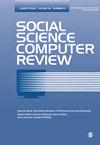破碎情感猜想的空间变异
IF 2.7
2区 社会学
Q2 COMPUTER SCIENCE, INTERDISCIPLINARY APPLICATIONS
引用次数: 0
摘要
犯罪不是随机分布的,而是倾向于在特定的空间集群中发生。文献发表了许多理论来解释其潜在原因。近年来,学者们越来越多地利用社交媒体大数据来丰富我们对犯罪的理解。在这些努力中,“破碎情感猜想”(Broken Emotion Conjecture)为犯罪和情感之间的联系提供了一个新颖的视角。然而,这种联系在不同的犯罪类型和地理空间之间是如何变化的仍不清楚。在本研究中,我们通过分析俄亥俄州辛辛那提市居民和游客的情绪,以及他们与袭击、入室盗窃、抢劫和盗窃的关系,来研究破碎情绪猜想的空间变化。通过空间统计分析,我们发现居民和游客的情绪状态对犯罪有明显的影响。具体而言,在控制了关键的社会经济和土地利用因素后,我们观察到居民的集体负面情绪与更高的入室盗窃可能性相关;而游客的集体负面情绪与袭击、入室盗窃和抢劫的风险增加有关。值得注意的是,我们没有发现居民和游客的负面情绪对盗窃的显著影响。这些发现与现有的犯罪学和心理学理论一致,但对情感和犯罪之间的联系提供了更细致入微的解释。我们的研究促进了犯罪-情绪关系研究的发展,支持了犯罪学中基于环境人口的情绪研究的发展,并提供了实际的政策意义。本文章由计算机程序翻译,如有差异,请以英文原文为准。
Spatial Variations of the Broken Emotion Conjecture
Crime is not randomly distributed but tends to occur in specific spatial clusters. The literature has published many theories to explain its underlying causes. In recent years, scholars have increasingly leveraged social media big data to enrich our understanding of crime. Among these efforts is the Broken Emotion Conjecture, which offers a novel perspective on the connection between crime and emotion. However, how this connection varies among crime types and across the geographic space remains unclear. In this study, we investigate the spatial variations of the Broken Emotion Conjecture by analyzing emotion of residents and visitors, and their associations with assaults, burglaries, robberies, and thefts in Cincinnati, OH. Through spatial statistical analyses, we find that emotional states of residents and visitors have distinct effects on crime. Specifically, after controlling for key socioeconomic and land-use factors, we observed that collective negative emotion among residents is associated with a higher likelihood of burglaries; while collective negative emotion among visitors correlated with increased risk of assault, burglary, and robbery. Notably, we found no statistically significant impact of either residents’ or visitors' negative emotion on thefts. These findings align with established criminological and psychological theories, but provide a more nuanced interpretation of the connection between emotion and crime. Our study contributes to the growing body of research on the crime-emotion relationship, supports the development of an ambient population based emotion research within criminology, and provides practical policy implications.
求助全文
通过发布文献求助,成功后即可免费获取论文全文。
去求助
来源期刊

Social Science Computer Review
社会科学-计算机:跨学科应用
CiteScore
9.00
自引率
4.90%
发文量
95
审稿时长
>12 weeks
期刊介绍:
Unique Scope Social Science Computer Review is an interdisciplinary journal covering social science instructional and research applications of computing, as well as societal impacts of informational technology. Topics included: artificial intelligence, business, computational social science theory, computer-assisted survey research, computer-based qualitative analysis, computer simulation, economic modeling, electronic modeling, electronic publishing, geographic information systems, instrumentation and research tools, public administration, social impacts of computing and telecommunications, software evaluation, world-wide web resources for social scientists. Interdisciplinary Nature Because the Uses and impacts of computing are interdisciplinary, so is Social Science Computer Review. The journal is of direct relevance to scholars and scientists in a wide variety of disciplines. In its pages you''ll find work in the following areas: sociology, anthropology, political science, economics, psychology, computer literacy, computer applications, and methodology.
 求助内容:
求助内容: 应助结果提醒方式:
应助结果提醒方式:


